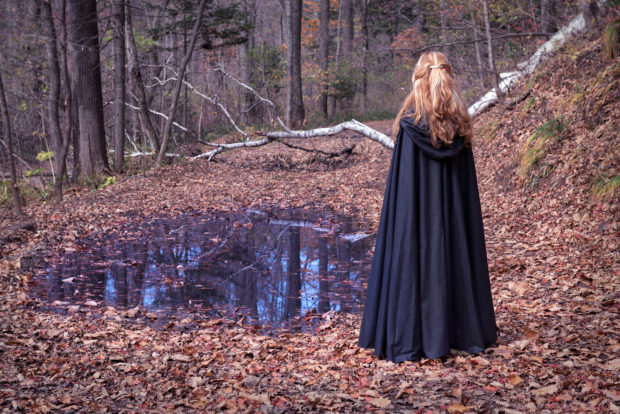The Remains Of Accused Witch Lilias Adie Mysteriously Vanished A Century Ago: Now, Scientists Have 3D Reconstructed Her Face And Are Hoping To Give Her A Proper Burial

Between 1560 and 1727, about three thousand and five hundred women in Scotland were accused of being witches bringing evil to the region and doomed to execution. Sadly, this witch-hunting craze likely resulted from a local illness that was deeply misunderstood at the time.
Nevertheless, countless residents fell victim to misguided arrests, which led to the maltreatment and death of numerous women– one of which being elder Lilias Adie.
She was from Torryburn, Fife, and, while in her late fifties or early sixties, had been imprisoned after allegedly confessing to crimes of witchcraft. Lilias’ accusers even claimed to have seen her fornicating with Satan.
However, historians believe that Lilias’ confessions were coerced and revealed that she even courageously warded off accusers by coming up with creative excuses as to why she could not share the names of other witches.
Lilias knew that if she gave up those names, more people would die. So, she remained under interrogation and all of its cruelties in hopes of saving others.
Written records from the time do indicate that Lilias was an aging, frail woman who likely had failing eyesight, though. So, after undergoing so much harsh treatment, she eventually could not take it anymore.
Lilias sadly ended up taking her own life while in prison in 1704 before the government ever could.
Nonetheless, her remains were still tied and burned at the stake before they were buried on a Torryburn, Fife, beach.
But, the locals were still so worried that Lilias might “reanimate” from the dead. So, they actually buried her under a large stone slab in hopes of weighing her down.

samiramay – stock.adobe.com – illustrative purpose only, not the actual person
Sign up for Chip Chick’s newsletter and get stories like this delivered to your inbox.
“Fearing the potential of revenant, they buried her hastily and unceremoniously out on the foreshore, which was traditionally reserved for those who died out of God’s grace,” explained Douglas Speirs, a Fife Council archaeologist.
“They locked her in a wooden box rather than a coffin and, for good measure, put a half-ton slab on top of her to stop her from rising out. It’s a gut churningly, sickening story– you can’t help being moved by it.”
Clever hunters were eventually able to rob the remains in 1852, but Lilias’ skull still somehow ended up making its way to St. Andrew’s University Museum in 1904.
And at that time, researchers photographed her skull before beginning to unpack her tormented history.
Strangely, though, all of Lilias’ known remains vanished that same year. And now, scientists are hoping to locate them and give Lilias a proper burial.
“It is important to recognize that Lilias Adie and the thousands of other men and women accused of witchcraft in early modern Scotland were not the evil people history has portrayed them to be. They were the innocent victims of unenlightened times,” said Julie Ford, the Fife Council councilor.
Moreover, Ford believes that awareness of Lilia’s story needs to be raised, and her remains need to be found in order to “give them the dignified rest they deserve.”
And amazingly, using the only image of Lilia’s skull taken all the way back in 1904, Lilia’s face was able to be reconstructed via modern technology.
BBC Radio Scotland’s Time Travels program collaborated with a forensic artist from the University of Dundee, Dr. Christopher Rynn, to use state-of-the-art 3D virtual sculpture programs to reveal Lilias’ face.

University of Dundee; pictured above is the reconstruction of what Lilia looked like
“It was truly an eerie moment when the face of Lilias suddenly appeared,” Dr. Rynn recalled, “Here was the face of a woman you could have a chat with, though knowing her story, it was a wee bit difficult to look her in the eye.”
Councillor Kate Stewart has been another instrumental force in the search for Lilias’ remains. She even coordinated a memorial in 2019 to honor her and every other woman who had been subjected to such failed attempts at justice.
“There is no recognition that these people were killed for nothing. When you dig down, it was a horrible, horrible time for ordinary folk– particularly women,” Kate said.
“The suffering was horrendous, and we should recognize that wrong was done and remember them in a respectful way.”
If true crime defines your free time, this is for you: join Chip Chick’s True Crime Tribe.
The Chilling Tale Behind What Happened On The Ghost Ship S.S. Ourang Medan
Her Daughter Said She Wasn’t Going To College, So This Mom Signed Her Up Anyway
More About:Freaky